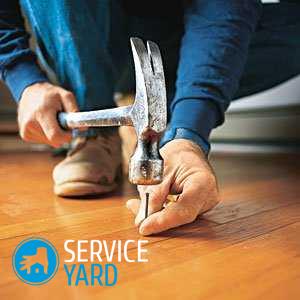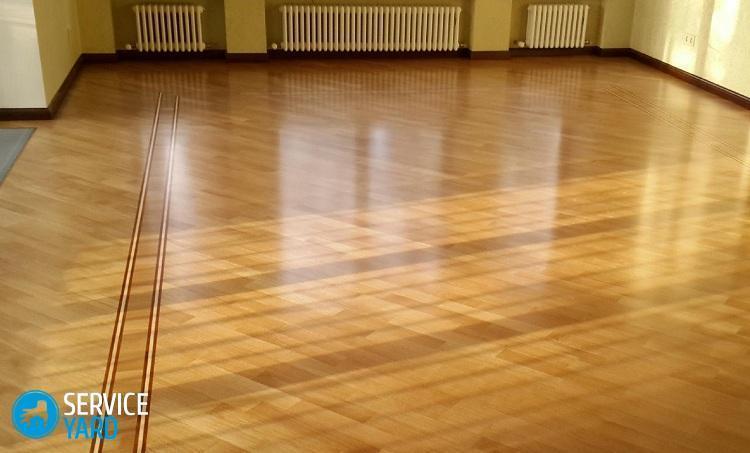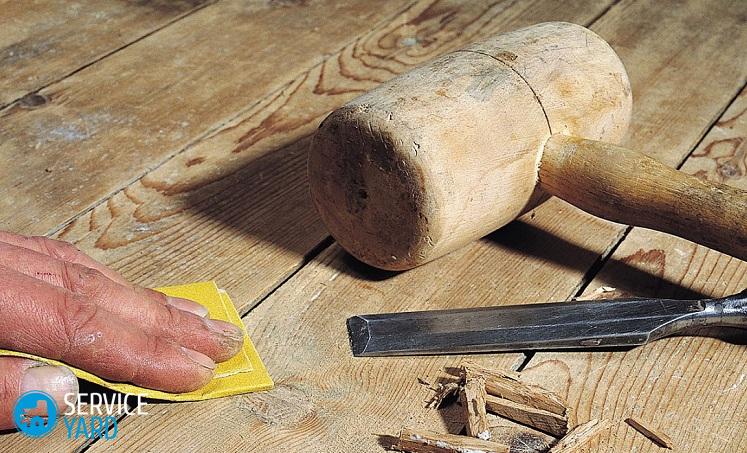Parquet creaks - what to do indiscriminately?

Today, parquet is quite in demand as a decorative floor covering. For many owners, the decisive factor is its environmental friendliness and aesthetics. However, wood, more than other materials, is subject to external influences. For example, over time, parquet can make an unpleasant sound - creak. There may be several reasons for this, therefore, if you have such a problem, you should understand the issue of when parquet creaks - what to do indiscriminately.
to contents ↑The main reasons for the creak of parquet
To eliminate the unpleasant creak of the parquet, first of all, it is necessary to understand the root cause of this problem. Mostly they are associated with installation errors. Of the most common, the following can be noted:
- Insufficient roughness of the rough floor. Due to a poorly aligned base, sooner or later, the parquet begins to deform, resulting in its mobility. As a result, an unpleasant creak appears. As a rule, the material is laid on the base of fiberboard or plywood sheets. If it is absent or loose on the floor, a creak may also appear.
- The flooring is too tight to the walls. Lack of gaps interferes with the standard expansion of parquet dies, does not allow to straighten out. Hence the creak.
- Incorrect installation of the log or their deformation. Among the errors of the lag device, I would like to note the absence or violation of steam or heat insulation, too big or small step. This contributes to loosening the lag. Deformed, they bend excessively and the panels are set in motion. Rubbing boards and make an unpleasant creak.
- Other causes of creakiness of the parquet floor are in violation of the temperature or humidity conditions in the room or errors in the installation of skirting boards.
What to do? Troubleshooting Options
Suppose you have identified why a parquet board creaks when walking. What to do about it? The answer to this question lies in the reason itself. Let's figure out what to do in various situations and dwell on the most common variants of the problem.
Uneven base
In this case, the floor, unfortunately, will have to be dismantled and start all over again. After eliminating all the irregularities on the cleaned base, it is poured with a new DSP or a self-leveling mixture.
Important! The height difference on the surface of the new subfloor should be less than 2 mm for every 2 square meters. Otherwise, after some time, the problem will reappear.
For a better and more reliable effect, it is desirable to cover the screed with sheets of chipboard, but here you can expect pitfalls.
Loose fit of chipboard to concrete base
To eliminate a creak in this situation without drastic action, most likely, will not work. However, if the floor defect has a local character, then you can apply the method that the masters use.
From the tools you will need the following:
- Drill with a drill 10 mm.
- Chisel.
- Syringe.
- DSP prepared in a ratio of 1: 3.
Procedure for resolving a problem:
- Find the places where the creak comes from.
- Remove some parquet panels.
- Drill a hole in the area that opens.
- Pour the solution into the hole using a syringe.
- Repeat the process in a day, and after another install the boards in their places.
In such a simple way, you can fix the problem.
Humidity mismatch
If you noticed that an unpleasant creak appears only in certain months, for example, in late autumn, then most likely this is due to a sharp change in the moisture content in the air. During the warm period, the dies of the parquet seem to accumulate moisture, and when the heating season begins, they begin to give off moisture and dry out, hence the sound.
Getting rid of it is quite simple:
- Buy a hygrometer and regularly check the humidity level in the room.
Important! For parquet this indicator should not exceed 50-60%.
- Properly care for the floor: you cannot wash such a coating, because, firstly, the panels absorb moisture too quickly, and secondly, moisture, falling into the cracks between them, leads to swelling and subsequent deformation of parquet boards. If necessary, wipe the floor with a damp cloth.
- Not the least role is played by the conditions under which the installation of the parquet board takes place: the humidity of the parquet should be about 9-10%, and the installation itself must be carried out at 15-20 degrees in the room.
Old coating peeled off
If you determine that the parquet is creaking precisely because the parquet has peeled off, proceed as follows:
- Measure with a marker or chalk all squeaky places. Mark these areas in small pieces of masking tape, placing them in increments of 20 cm.
- According to the marking, drill holes with a diameter of 2 mm in depth to the concrete base.
- Using a medical syringe, squeeze out a small amount of glue and let it dry. It will take about an hour.
Important! In the process of drying, the glue may foam and partially come out. That is why adhesive tape is needed - it will protect the parquet from damage. If, however, glue gets on the surface of the coating, remove it using a solvent.
- Remove masking tape along with glue residue.
- Press the repaired areas with something heavy, such as sandbags or flour.
- Now restore the floor. To do this, use a piece of wax chalk in the color of the coating.
Important! You can start walking on the repaired floor after a day.
Lack of necessary gaps between walls and floor
As you know, a material such as wood can be deformed under the influence of temperature and humidity fluctuations. The panels swell and friction against the walls begin to creak unpleasantly. It is logical to assume that with an increase in the gap between the planks and the wall, it will disappear. Therefore, in this situation, you need to remove the baseboard and trim the decorative canvas along the entire room.
to contents ↑Parquet floor
Speaking about the disadvantages of parquet flooring, swollen dies are most often mentioned. But no less negative consequences can lead to their drying up. To solve the squeak problem in a similar situation, you can use different methods:
- Cycle the old parquet and varnish, which penetrates the pores of the wood, as well as the gaps between the planks. He will “tightly” fix the parquet panels between himself and with the base - the creak will disappear.
- Remove the creaking planks and replace them with new ones. If the extracted panels have retained their appearance, they can be used again. Clean the opened cavity from debris, cover it with a piece of thin cardboard and nail the die on top of it. Hide nails under a layer of putty or wax. At the end, polish the repaired area.
- Between the individual dies, hammer the wooden pins in a special way. To begin, drill a hole with a diameter of 8 mm between them. Lubricate the thin pins with wood glue and drive them into the prepared holes. Cut off the excess on the outside with, for example, a chisel. After that, fill up the existing defects with putty and polish.
Loose mounts and lags:
- To get started, open access to the desired area of the base of the floor.
- Additionally fix the logs in these places with one or two screws.
- If the loose area is large, drive in a wedge and secure it through the logs.
- The sticking edge of a wedge just saw off.
Stock footage
Agree, it is very unpleasant when, when walking on a parquet floor, it makes an unpleasant, creaking sound. To solve this problem, you first need to understand its root cause. And having figured it out, you can already begin to eliminate the creak of the floor with your own hands.
- How to choose a vacuum cleaner taking into account the characteristics of the house and coatings?
- What to look for when choosing a water delivery
- How to quickly create comfort at home - tips for housewives
- How to choose the perfect TV - useful tips
- What to look for when choosing blinds
- What should be running shoes?
- What useful things can you buy in a hardware store
- Iphone 11 pro max review
- Than iPhone is better than Android smartphones





